MSI GS66 Stealth Review: Thin and small, with a 300Hz screen - lerouxbude1967
The MSI GS66 Stealth is the latest GS-series laptop computer from the company, and it continues the tradition of pushing the envelope connected shriveled-and-light gaming machines.
With the GS66 Stealth, MSI redesigns the trend-setting GS65 Stealing to be, cured, a bit stealthier—and stylish. Dead are the red-and-black logos that screamed 'gamer,' as well as the Au accents of the two previous designs. The new GS66 (currently $2,999 on Amazon) is designed to slip exact into those boring corporate meetings with opposite sedate black business laptops. Once you're hit the clock, it screams with all the might you'd ask from an Intel 10th-gen, 8-pith Core i9-10980HK and Nvidia GeForce RTX 2080 Super Max-Q GPU. Keep Reading to discovery out more about this trendsetting gambling laptop.
This review is share of our current roundup of the best gaming laptops. Go at that place for information on competing products and how we tested them.
MSI GS66 Stealing Specs
As you read through the specs for the GS66 Stealth, remember that this is one of the thinnest gaming laptops available. The GPU is a power-efficient Easy lay-Q design, but otherwise there are few compromises compact into this slender consistency.
CPU: Intel 10th-gen, 8-core Core i9-10980HK
GPU: Nvidia GeForce RTX 2080 Super Max-Q
RAM: 32GB DDR4/2666 in dual-channel mood
SSD: 1TB NVMe Samsung PM981
Networking: WiFi 6, Killer NIC 2.5Gbps ethernet, Bluetooth 5.1
Battery Capacity: 99.9 Watt-hours
Dimensions: 14.2 x 9.7 x 0.7 inches
Weight: 4.6 pounds, add 1.9 pounds for the AC adapter
The best manner to describe the generous port wine selection on the GS66 Stealth is with photos. On the left side, as shown below, you'll assure (left to right) the holy charging port, Thunderbolt 3, HDMI 2.0, and SuperSpeed USB 10Gbps Type-A.
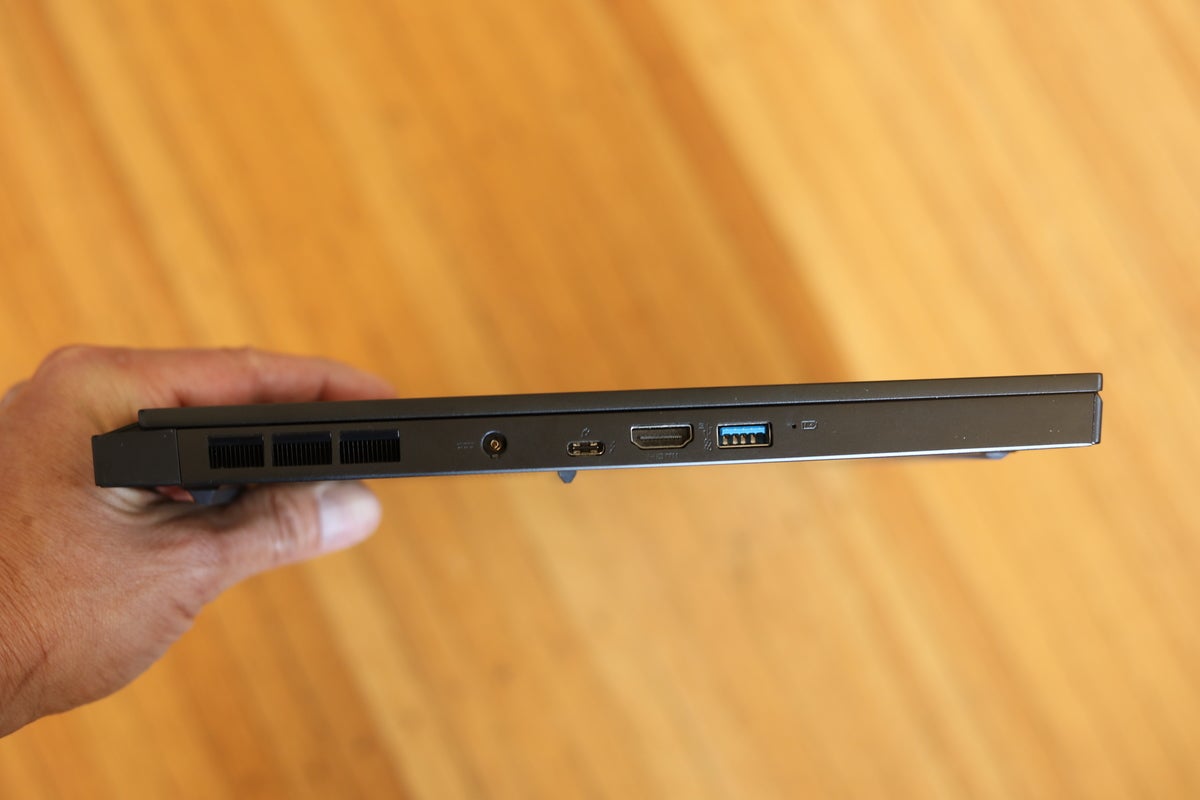 Gordon Mah Ung
Gordon Mah Ung The left face of the GS66 features (larboard to moral) a dedicated charging port, Thunderbolt 3, HDMI 2.0, and SuperSpeed USB 10Gbps Type-A.
One thing the GS66 Stealth lacks is an integrated SD Card reader. But we understand distance is at a exchange premiu. When you add skyward everything on the honorable side (below), we like what you mother instead: two more SuperSpeed USB 10Gbps USB-A, a SuperSpeed 10Gbps USB-C, analog headset jack, and nicest of all, a Killer NIC E3100-based 2.5Gb ethernet port.
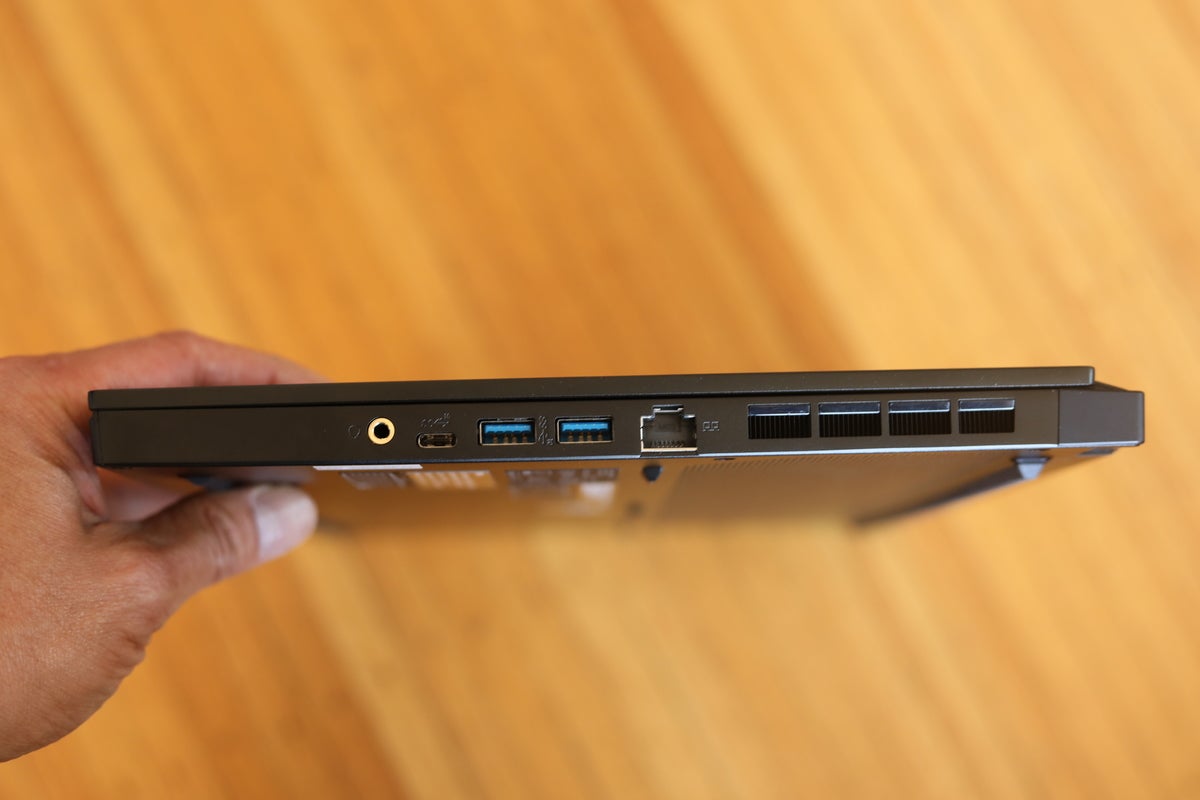 Gordon Mah Ung
Gordon Mah Ung The right side features linear phone seafarer, deuce SuperSpeed USB 10Gbps USB-A ports, a SuperSpeed USB 10Gbps USB-C, and 2.5Gb ethernet.
The 300Hz display matters!
To the highest degree notably, MSI has armed the GS66 Stealth with a 15.6-inch 1080p (1920×1080) 300Hz panel with a rated 3ms latent period. Yes, you heard that word-perfect. Your 144Hz play laptop screen is basically obsolete.
We're mostly kidding, only times are changing. While we used to consider that high-refresh-rate gaming monitors were only recyclable for those with bionic vision and lightning reflexes, we've since found that higher refresh rates form a huge difference for anyone. The more information you see on the screen, the bettor chance you have of making the shot in a game. Actually, any content that is scrolled on the screen and refreshed can benefit from a simplification in the blurring we've all just gotten in use to with LCD screens.
 IDG
IDG This photo test at Blur Busters testufo.com scrolls a photo at maximum refresh of the panel. It was nearly tack-astute on the 300Hz MSI GS66 Stealth's panel.
To learn if our eyes could tell, we went to Blurbuster's Testufo.com. Blurbusters has long been a pioneer in the push to dilute blurring during question. For compare we set up side-by-side with the GS66 Stealth a 15.6-inch gaming laptop with a 144Hz panel, and a 15.6-inch 4K 60Hz gaming laptop. We then used Testufo.com to scroll a lancelike, 80s-era-like UFO animation on all screens, too as Testufo.com's Moving Photo test. (You can run the tests yourself away using Chrome and going away to Testufo.com).
The 4K, 60Hz test was the blurry mess we expected. The 1080p, 144Hz panel was markedly better. But yes, the 300Hz, 3ms panel in the GS66 Stealth put both to shame, displaying the scrolling photo with all but tack-sharpness to our eyes. Our eyes say it's worth it if your enemy is blurring.
MSI GS66 Upgrade paths
One and only sin of previous 15.6-edge in GS-series laptop designs was the use of inverted motherboards, which had to be removed entirely to access the SSD and RAM. With the unaccustomed GS66 Stealth, no such gymnastics are needed—just pop off the underside panel, and the two SO-DIMM slots and two M.2 slots are right there.
Keyboard and trackpad
The keyboard on the GS66 is slimly mushy, but overall we'd pronounce information technology's powdery. The trackpad is oversized and continues to be centered a bit to a fault far to the right for our fat palms. Palm rejection, nevertheless, is quite a good. The Microsoft Precision-enabled trackpad is kit and caboodle smoothly and responsively.
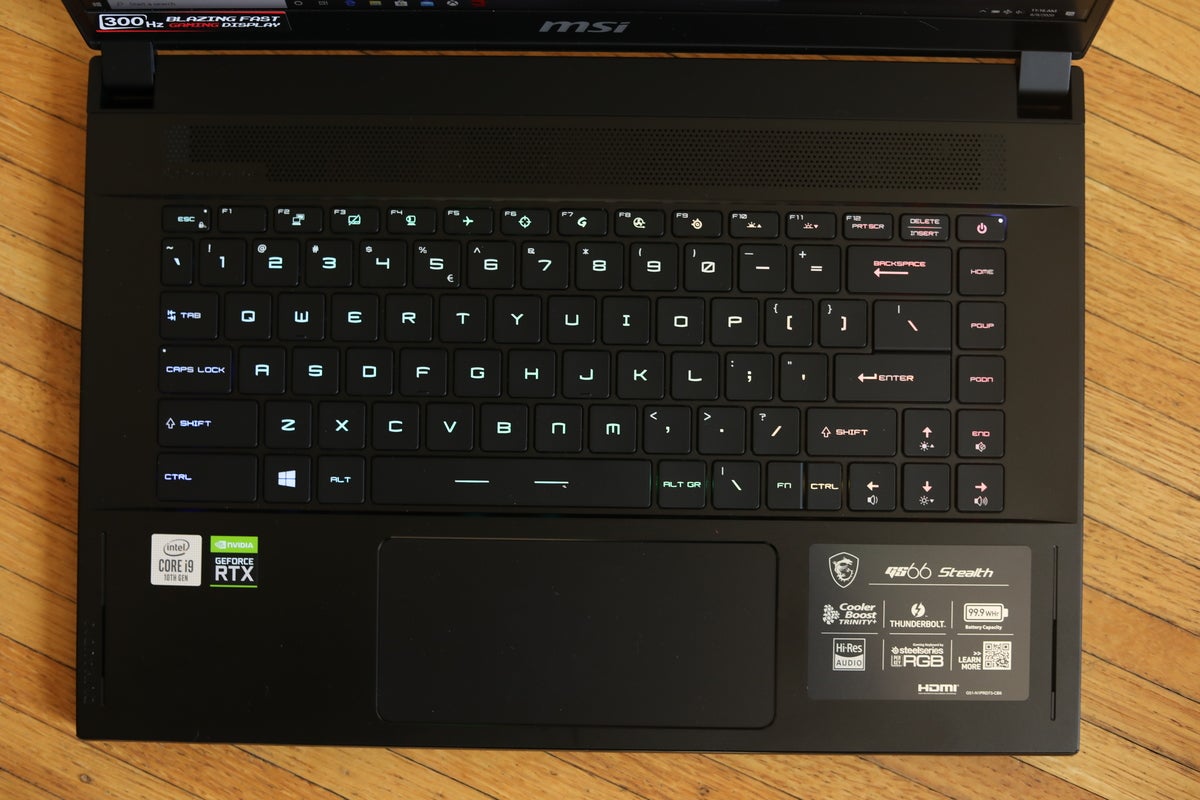 Gordon Mah Ung
Gordon Mah Ung The keyboard is per-key lit and features a wide-aspect Precision trackpad, which is among the smoothest our fingertips have of all time touched.
Speakers and Tv camera
MSI likes to highlight that the GS66 Stealth's speakers lineament vents aimed at the exploiter, spell other laptops choose to fire the audio to the broadside Oregon bounce IT murder the table. Unfortunately the audio is still pretty mediocre. We know it's hard to jam all this ironware into a thin laptop computer, but MSI seems to have shrugged off the audio.
MSI does somehow in condition a Windows How-do-you-do biometric camera into the GS66 Stealing's slender bezel. Most gaming laptops choose fingermark readers or give up on biometrics totally, so having a Windows Hello camera in a gaming laptop is welcome. See quality for your Zoom video conferences is fair—it's a 720p video camera, the same resolution you'll find on the vast majority of laptops out there.
MSI GS66 Stealing Performance
With the GS66 Stealth we were honestly concerned whether you could jam a Core i9 with an RTX 2080 GPU into a Cuban sandwich-5-pound, 15.6-inch laptop without via media. After all, these must be a reason why so few vendors have tried this before.
As modern performance laptops are often tuned to be quieter and cooler out of the box, we tested the GS66 Stealth using both its default "Balanced" performance style and its "Extreme" setting as well. You'll see the results from both settings below.
CPU Performance
We'll kick this off with the forthwith-elderly Cinebench R15 test, which measures multi-core 3D model performance. Line that the default Balanced performance of the GS66 Stealth (the shorter cherry-red block below) is a spot underwhelming. That's because MSI reduces the rooter noise therein setting to keep users felicitous, which forces the laptop to throttle C.P.U. performance to keep cool. In this case, MSI plays IT perhaps as well conservatively.
Note that when we first received the GS66, default multi-core performance was far better—but it also kicked fans on far sooner. The company pushed out a BIOS and firmware update to address complaints, and the result along default on is the shorter carmine legal profession you see below.
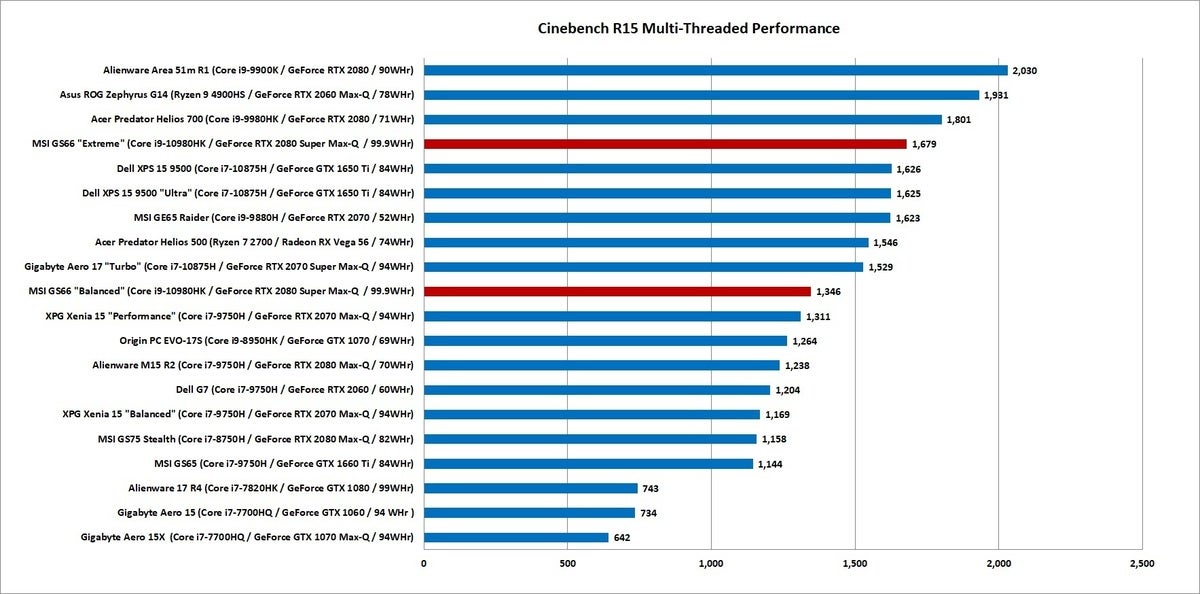 IDG
IDG Fortunately, when you set the GS66 Stealing to Extreme, it starts to come into being—see yearner red bar in a higher place. While information technology doesn't bear on aside the two far bigger Intel laptops (nor that annoying AMD one), it's about what we'd anticipate for a laptop this thin with an 8-core Burden i9 inside.
We used Cinebench above to get a pandemic feel for for multi-nub performance, but the immense majority of applications are single-threaded—and Cinebench can measure that, overly.
The story Here is a bit different: The GS66 Stealth pulls its weight and is outpaced solitary by three 17-inch laptops. But as you can understand, the results are all so close, information technology's glucinium hard to evidence the difference founded happening single-core Central processing unit performance for most tasks. The shorter red bar below is the Balanced result, while the thirster one is the Extremum result.
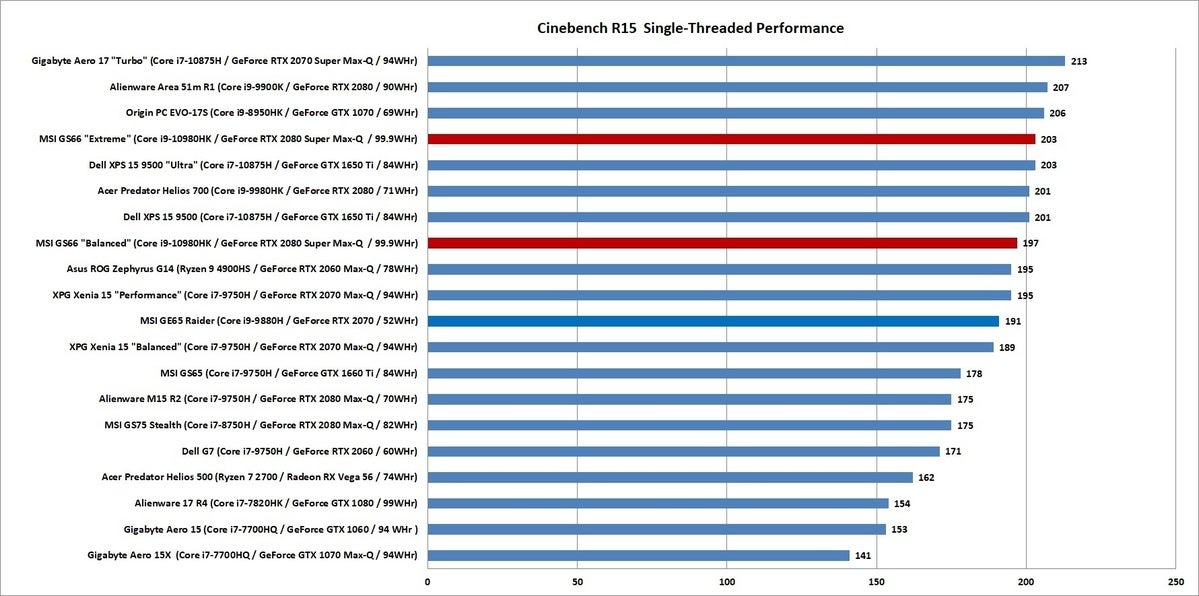 IDG
IDG While the "Extreme point" setting creates more fan noise, we discovered that the Gigabyte Aero 17, when fit to its top performance setting, is even louder than the GS66 Stealing.
Because the Cinebench test is brief—au fon a sprint, we run a second CPU psychometric test that's more of a marathon, so we can see how the CPU performs subordinate extended load. For that we use the sovereign HandBrake telecasting encoding public utility company to convert a 30GB file using the Humanoid Pill preset.
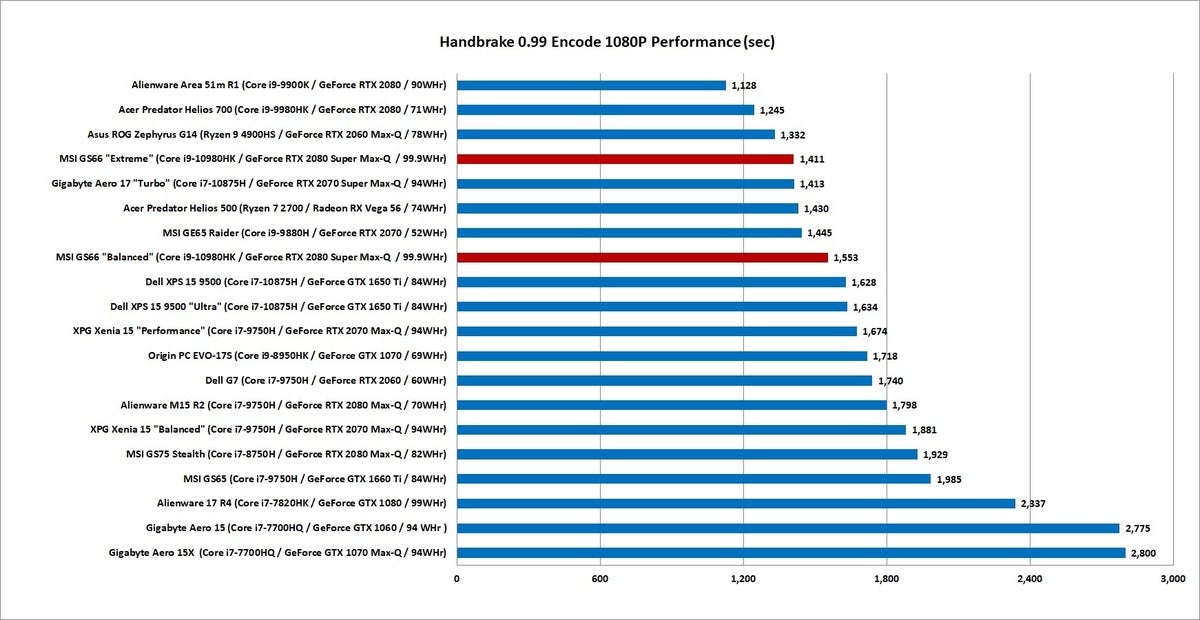 IDG
IDG Therein screen, shorter is bettor. The result is over again nifty when set to Extreme (the shorter red Browning automatic rifle above), but somewhat less so when set to its default Poised. The GS66 Stealing as wel struggles to maintain with the Gigabyte Aero 17, which is an 8-core break off but a stair depress (Core i7-10875H). That Ryzen 9 4900HS doesn't help either.
General CPU performance for the GS66 Stealing is respectable when set to its fan-burdensome Extreme setting, and fair Sooner State when hardening to its nonremittal Balanced setting.
The GPU matters more for gaming, so keep reading for graphics results.
Graphics Performance
To get a feel for the graphics performance of the MSI GS66 Stealth, we'll kick this off with 3DMark Time Spy's DirectX12 graphics test. It's a synthetic test, but respected and also very repeatable. The graphics sub-score excludes CPU performance and measures just the GPU.
The ensue is good, but non that more faster than anything other. Peradventure worsened, it's running cervix-and-neck with the XPG Xenia 15 (which we'll soon reappraisal), with its RTX 2070 non-First-rate. In for the most part older tests such A FireStrike, which is a DirectX 11 test, the GS66 Stealing antitrust can't exposed up any infinite betwixt itself and opposite similar-sized laptops with lower-tier GPUs.
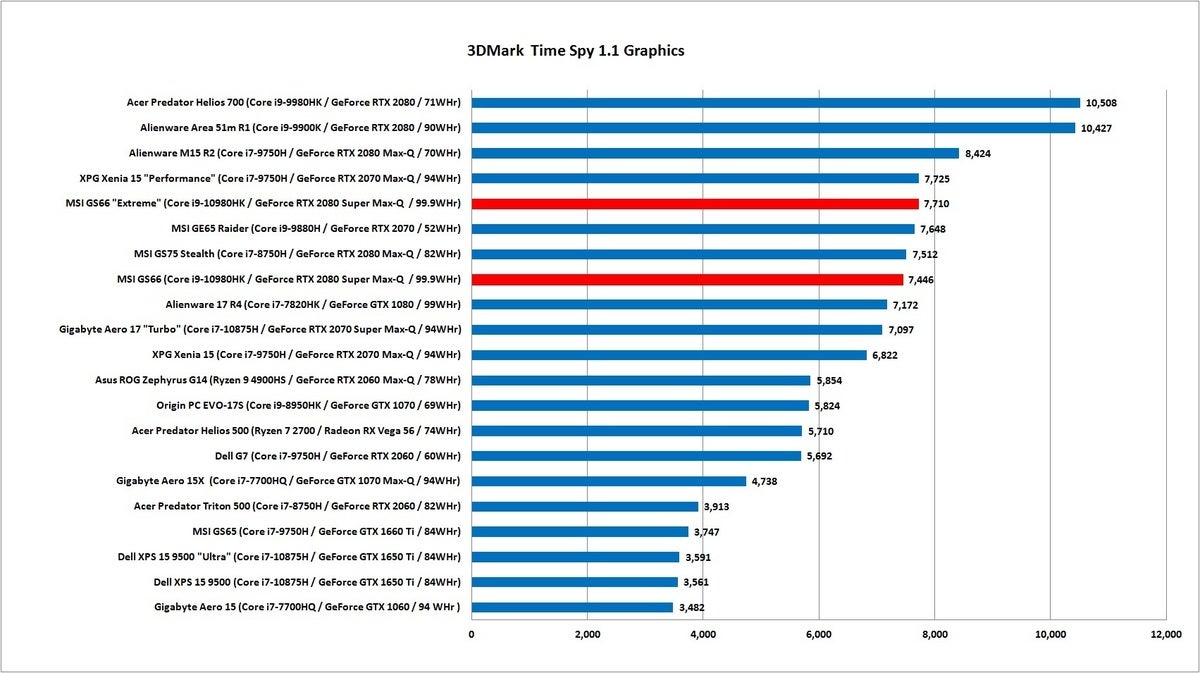 IDG
IDG In 3DMark's Port Royal Ray Tracing test, the vocal was about the same. The GS66 Stealth's performance was good, but it was looking over its shoulder most of the time.
 IDG
IDG We did run a few games, so much as the aged Resurrect of the Tomb Raider, a DirectX 11 rubric. The GS66 Stealing is again in a good position and offers plenty of carrying out, merely we just expected more.
 IDG
IDG Perhaps the just about important test for any laptop this visible radiation (and yes, 4.6 pounds is light for this much hardware) is shelling run time. For this test we laid the laptop's display brightness to 250-260 nits, enable plane mode, and insert earbuds with the volume at middle setting. We then loop a 4K video using Windows 10's Movies & Idiot box app. We also curing the GS66 Stealing to its Power Saver option, which we suppose well-nig would doh if they were truly trying to stretch unsuccessful the battery.
The result is a real neat finish, with nearly 7 hours of run fourth dimension. Your mileage will vary, and this examine is pretty lightweight. If you were to say browse the web, you should expect to shave off a quarter to a third base of that electric battery life. If you were to encode a telecasting OR coiffe qualifier CPU tasks, cut it to just two hours. If you fire improving that GPU, you'll probably be luckily to get to a higher degree 90 minutes.
Still, this is very well-behaved performance in battery lifespan for a gaming laptop. MSI clearly wrings everything information technology can out of that 99.9-Watt-time of day barrage.
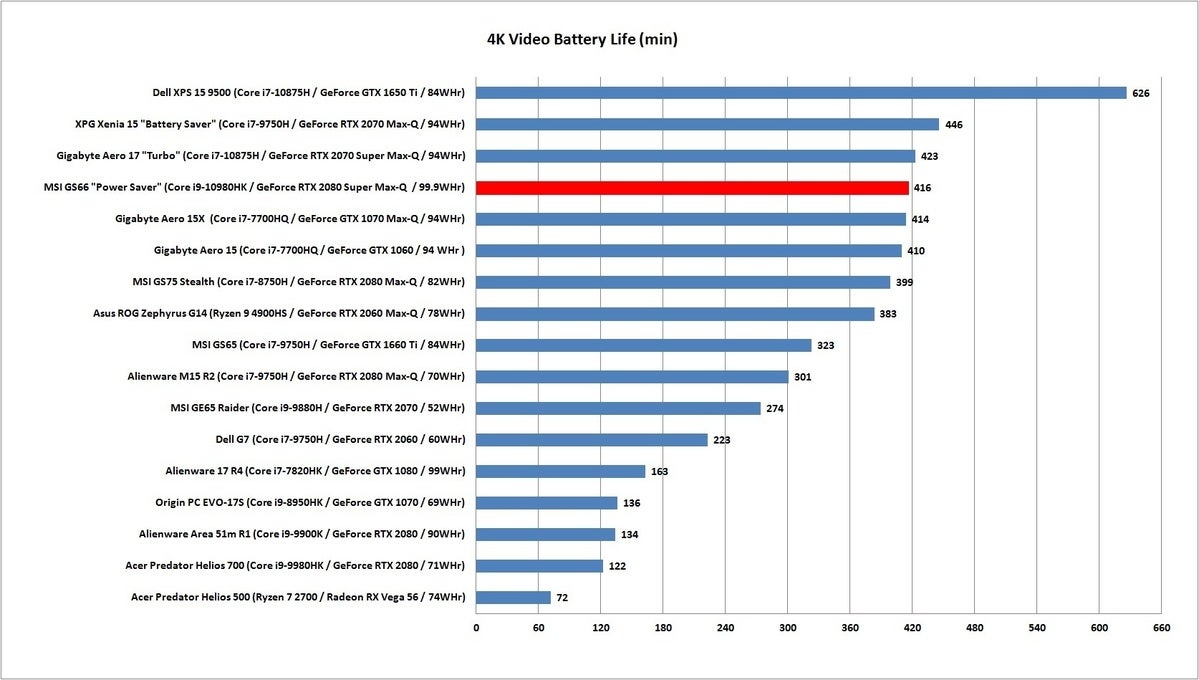 IDG
IDG Should you buy the MSI GS66 Stealing?
If you glint back at the charts above, the MSI GS66 Stealth posts solid carrying out boilers suit, especially considering its weight and size. The problem is when you look at the pedigree of the components inside—Core i9 and RTX 2080 Super—as well as the price arsenic configured, we hoped for much.
The reason, of course, is how thin the laptop is. We measured our unit at near 19mm. That's maybe 1mm to 2mm thinner than competing designs we've seen, credibly enough of a muffler on thermal performance to prevent that Core i9 and RTX 2080 Super from stretching their legs fully.
The easy unsex is to click information technology bolt down a notch on the components. The selfsame laptop is available with a 6-core Core i7-10750H and RTX 2080 Tiptop for $2,699 currently on AmazonRemove non-product link. The champion bang for the sawhorse is liable the GS66 Stealth with Core i7-10750H and RTX 2070 Super for $2,249 currently happening AmazonRemove non-production tie-in.
All three configurations attach to that sweet, sweet, 300Hz control panel, which might be worth the price at whatsoever conformation.
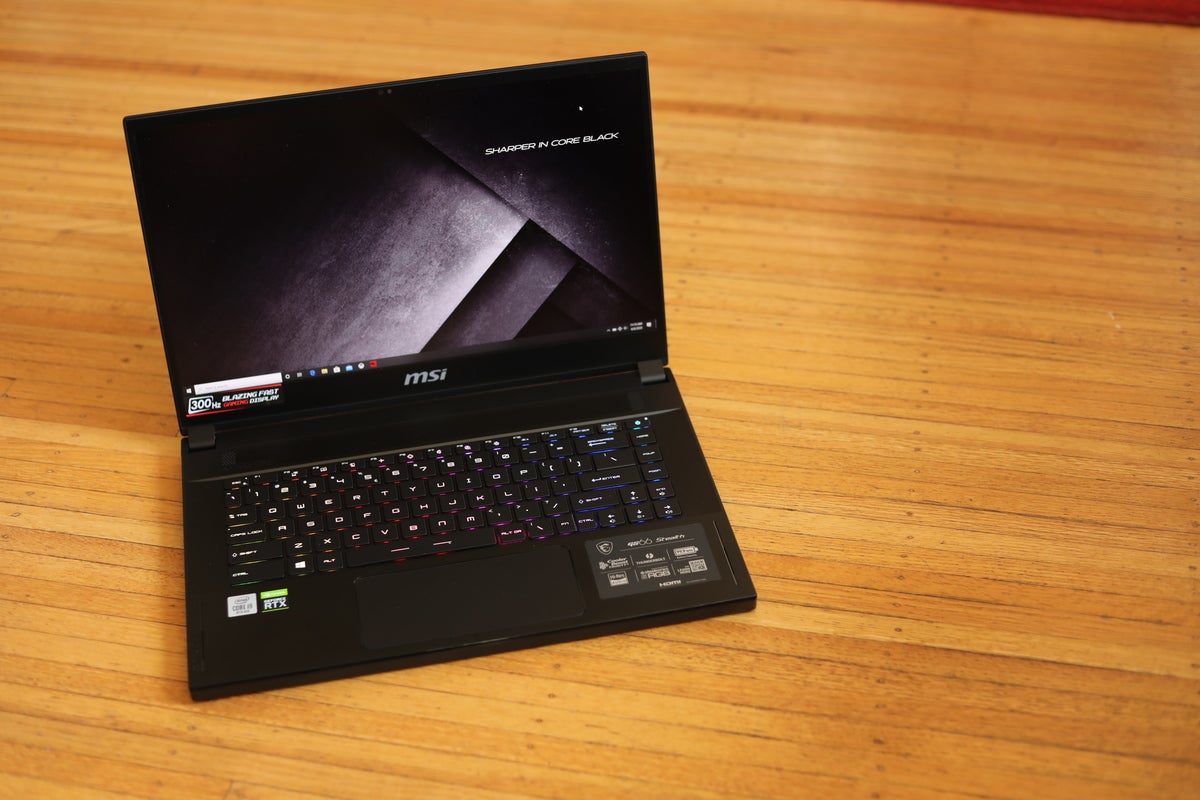 Gordon Mah Ung
Gordon Mah Ung Source: https://www.pcworld.com/article/399308/msi-gs66-stealth-review.html
Posted by: lerouxbude1967.blogspot.com


0 Response to "MSI GS66 Stealth Review: Thin and small, with a 300Hz screen - lerouxbude1967"
Post a Comment